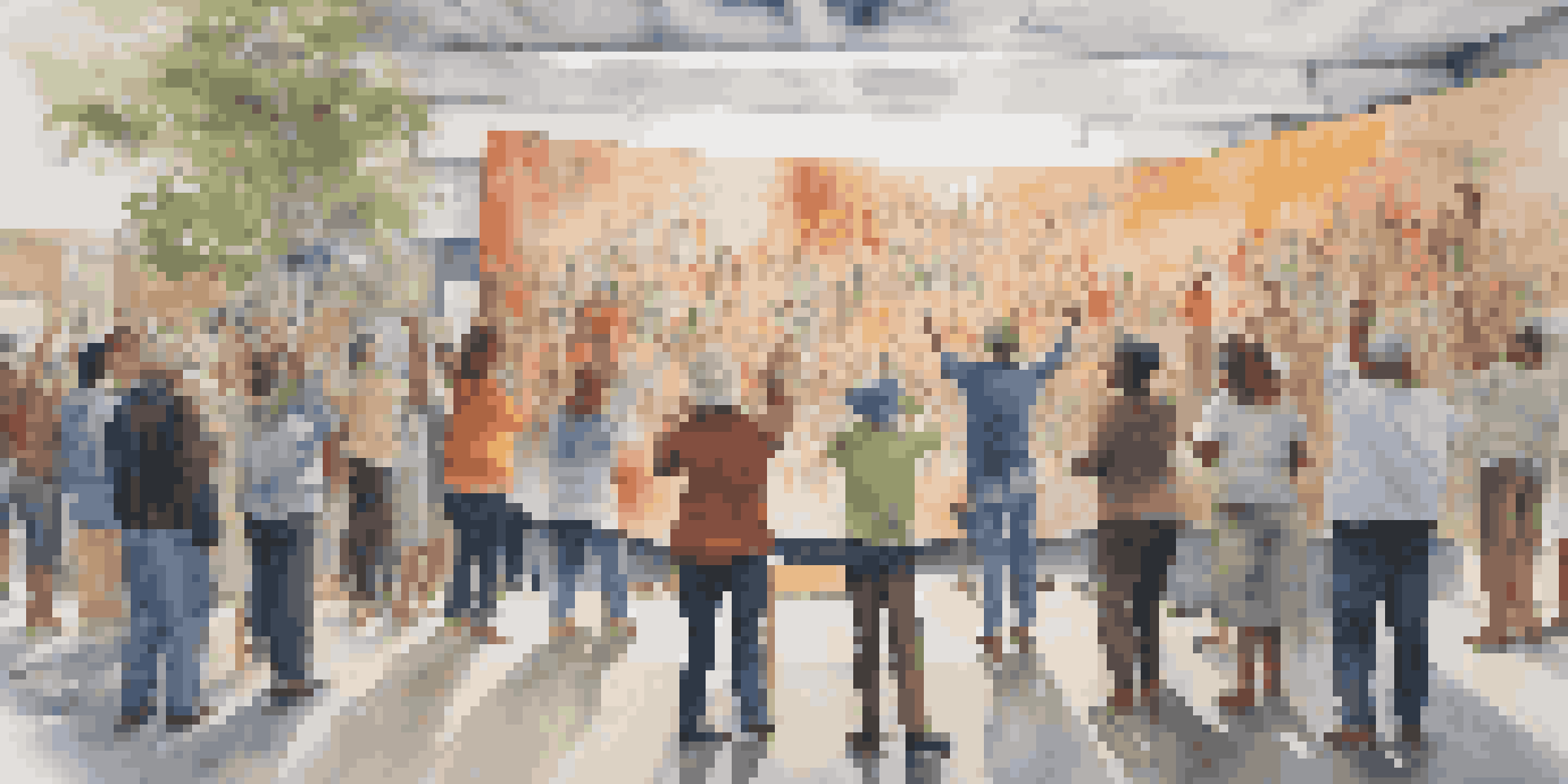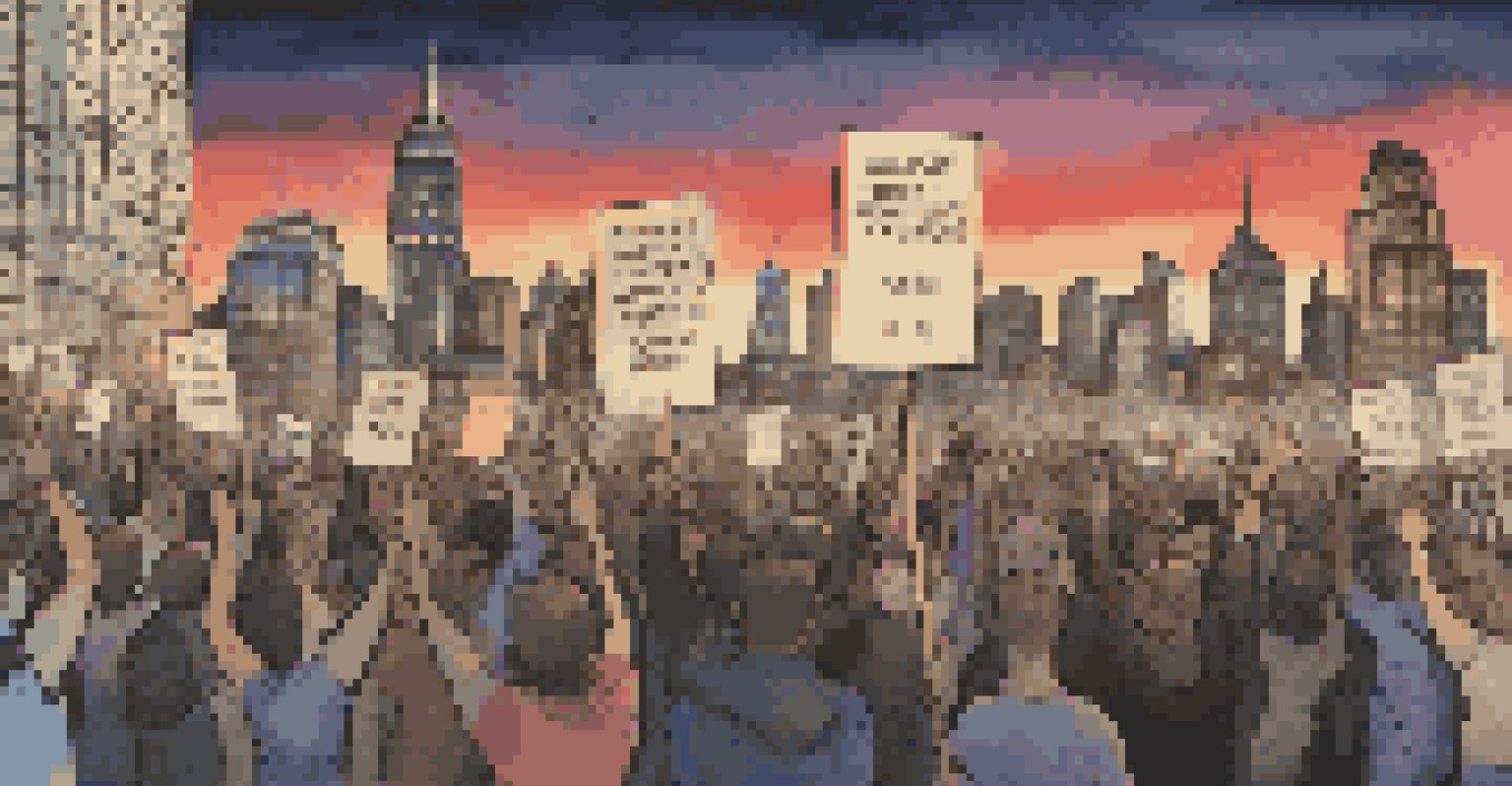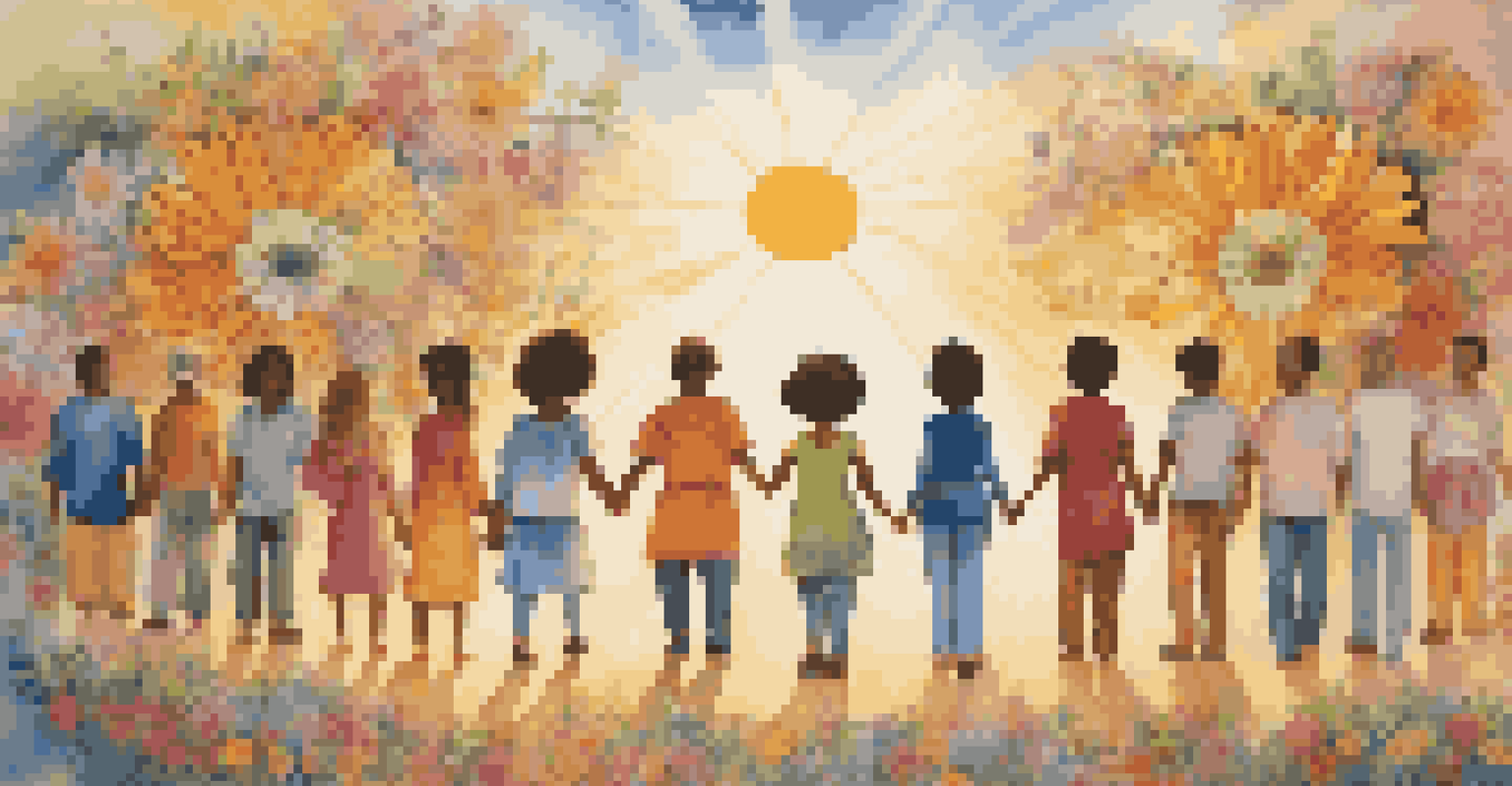The Role of Art in Documenting Historical Social Movements

Art as a Reflection of Historical Social Movements
Art has always served as a mirror to society, reflecting the values, struggles, and aspirations of its people. Throughout history, social movements have inspired artists to create works that encapsulate the sentiments of their time. For instance, the Civil Rights Movement in the United States saw artists like Charles White and Romare Bearden use their craft to depict the fight for equality.
Art is not a mirror held up to reality but a hammer with which to shape it.
These artistic expressions not only document events but also evoke emotions, making the struggles of marginalized communities more relatable. Through paintings, music, and literature, artists provide context and depth to historical narratives that might otherwise be overlooked. This connection between art and activism fosters a greater understanding of societal issues.
Ultimately, art becomes a powerful tool for documenting and preserving the essence of social movements, ensuring that future generations can learn from the past. By encapsulating the spirit of the times, art invites dialogue and reflection, keeping the conversation about social justice alive.
Art as a Catalyst for Change in Social Movements
Beyond documentation, art often serves as a catalyst for change, motivating individuals to take action. Iconic pieces, like Picasso's 'Guernica,' not only illustrate the horrors of war but also ignite a passion for peace and justice. When people encounter art that resonates with their experiences, they are more likely to engage with social issues and become advocates for change.

Public art installations, for example, can transform spaces and provoke thought, encouraging communities to reflect on their histories and current challenges. Street murals and graffiti often convey powerful messages that challenge the status quo, making social movements more visible and accessible. This accessibility can lead to increased awareness and support for various causes.
Art Reflects Social Movements
Art serves as a mirror to society, capturing the values and struggles of social movements throughout history.
Therefore, art does not merely document; it actively participates in the dialogue surrounding social change. By inspiring action and fostering connections, art can mobilize individuals to join movements, making it an indispensable element in the pursuit of justice.
The Role of Artists in Social Movements
Artists often find themselves at the forefront of social movements, using their platforms to advocate for change. They play a crucial role in shaping public perceptions and sparking conversations around pressing social issues. By leveraging their creativity, artists can communicate complex ideas in ways that resonate with a broad audience, making them key figures in movements for change.
The role of the artist is to make the revolution irresistible.
For example, during the Women's Suffrage Movement, artists collaborated to create posters and pamphlets that highlighted the struggle for women's rights. Their ability to convey messages visually helped garner support and mobilize people from diverse backgrounds. This collaborative spirit continues today, with artists partnering with activists to amplify their messages.
Consequently, the relationship between artists and social movements is symbiotic; artists provide the creative fuel that drives movements forward, while movements offer artists a platform to express their beliefs and experiences. Together, they create a powerful force for change.
The Impact of Digital Art in Modern Social Movements
In today's digital age, art has taken on new forms that further enhance its role in social movements. Social media platforms allow artists to share their work instantly, reaching global audiences and amplifying their messages. Digital art, including memes and graphic designs, can spread rapidly, making it an effective tool for raising awareness about social issues.
For instance, during the Black Lives Matter movement, artists utilized digital platforms to create powerful imagery that highlighted systemic racism and police brutality. These visual narratives not only captured the attention of millions but also encouraged discussions around these crucial topics. The immediacy of digital art allows for real-time responses to unfolding events, keeping conversations alive.
Art Inspires Change and Action
Art acts as a catalyst for change, motivating individuals to engage with social issues and advocate for justice.
As a result, digital art has revolutionized how social movements communicate and engage with the public. It empowers artists to be active participants in the dialogue, ensuring that their voices are heard and their messages resonate.
Art as a Tool for Healing in Social Movements
Art can also serve as a healing mechanism during and after social movements. In times of turmoil, creative expression provides an outlet for individuals to process their experiences and emotions. Artistic practices such as painting, music, and writing can foster a sense of community and solidarity among those affected by social injustices.
For example, community art projects that invite participation can help individuals collectively address trauma while celebrating their shared identities. These spaces often become sanctuaries where stories are told, and healing begins. The therapeutic aspects of art can offer comfort and resilience, helping individuals and communities to rebuild.
Ultimately, this healing aspect of art contributes to the longevity and impact of social movements. By allowing individuals to express their pain and hope, art plays a vital role in nurturing collective healing and promoting a brighter future.
The Challenges Artists Face in Documenting Social Movements
Despite the significant role art plays in documenting social movements, artists often encounter numerous challenges. These can include censorship, funding issues, and the struggle to find authentic voices within a complex narrative. Some artists may face backlash for their work, especially when addressing controversial topics, which can deter them from fully expressing their views.
Moreover, the commercialization of art can dilute its message, as some pieces may be co-opted for profit rather than genuine advocacy. This creates a tension between the artistic integrity and the desire to reach a wider audience. Artists must navigate these challenges while remaining true to their beliefs and the movements they represent.
Digital Art Transforms Activism
In the digital age, art takes new forms that enhance its role in social movements, allowing for rapid sharing and global engagement.
As a result, it becomes crucial for artists to find supportive communities and platforms that value their contributions. By fostering environments that encourage authentic expression, society can ensure that the role of art in documenting social movements remains impactful and meaningful.
The Future of Art in Social Movements
Looking ahead, the role of art in social movements is likely to evolve as new technologies and societal dynamics emerge. As more individuals engage with social issues, artists will continue to play a vital role in shaping narratives and inspiring action. The intersection of art and activism will remain a powerful force for change, as artists explore innovative ways to communicate their messages.
We can expect to see a rise in collaborative projects that bridge gaps between different communities, fostering a sense of unity and shared purpose. Social movements will likely harness the power of emerging technologies, such as virtual reality and augmented reality, to engage audiences in immersive experiences that highlight their causes.

Ultimately, the future of art in social movements is bright, as creativity continues to inspire hope and resilience. By adapting to new challenges and opportunities, artists will remain essential in documenting and driving social change.